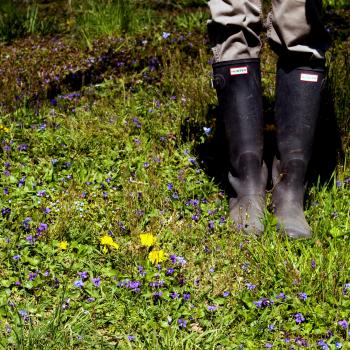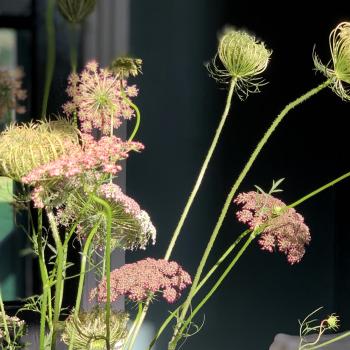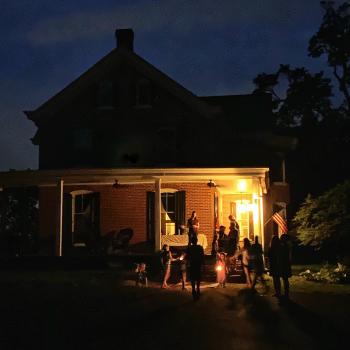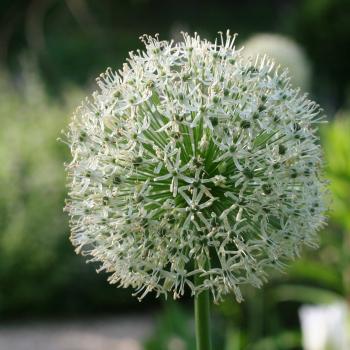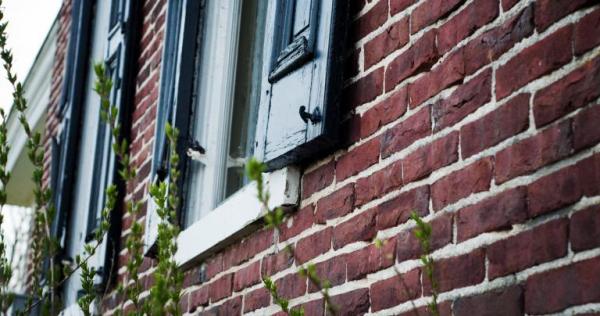
Six years ago, we moved into a red brick farmhouse built in 1880 by a Pennsylvania Quaker family.
We thought that most of the large repairs the house needed had already been made. The previous owners had dug a new well, replaced knob-and-tube wiring, and installed a lovely new kitchen. Somewhere in our minds, we understood vaguely that many of the bricks were cracked, the mortar was crumbling, and the window sills were slowly rotting away, but those things were somehow easier to ignore because we did not know how to address them.
What we did know how to do was garden, and we busied ourselves building raised beds for a vegetable garden and, later, a picket fence for a flower garden.
But brick dust, and mortar dust, and wood dust became harder and harder to ignore until the day when an expert restorer of old homes looked at the roofline molding I was asking him to repair and said, kindly, “Yes, I can do that. But maybe we should start by taking care of these bricks?”
And he did.
Two years and one tricky to match historic-limestone-mortar recipe later, and our solid brick walls were solid again.
*
The creation story of Genesis is unlike the creation myths of other ancient religions because it states that we are made of the same raw material as the world around us. We are not offspring of the gods. We are made of dust.
We may bear the image of a creator, but we also share kinship with stars and starfish, with turtles and trees. It strikes me as beautifully poetic that our strongest, safest houses are made of rock and clay, the same “dust” of our own making. But more than poetry, there is also, perhaps, a warning, a caution, and a call to humility.
We are only dust.
Our solid brick houses are also only dust.
Our kinship is with fragile, temporal things.
*
This week marks the beginning of Lent. It is the season when we remember our fragility, our mortality, and our need for a healer.
Lent is a barren season, and I never look forward to it. I much prefer the joyful anticipation of Advent.
But one of the lessons I’ve learned caring for this old house is that nothing is gained when we turn away from hard, difficult, broken things. Nothing is gained when we pretend that we are perfectly well, thank you very much.
This farmhouse needed someone who would really look at it because I kept looking away.
It takes compassion and courage to look right at the things that need a healer’s touch.
As I write in my new book Placemaker:
If peace is a state of harmony, if it is a kind of wholeness or completeness, then we will never find it by running away from broken things and messy places. We will find it, in truth we will make it, when we draw near to the mess with shovels and paint cans.
*
How will I observe Lent this year?
There will be some giving up, some letting go, some doing without. There will be some hunger. Some discomfort. Those are my metaphorical shovels and paint cans.
But those tools are not the substance of this season nor are they the destination. They are the path by which I hope to “draw near” to the broken things and messy places within my self.
As we draw near to our own broken places, may we have eyes to see that our healer has already drawn near.
*
Readers, my new book Placemaker: Cultivating Places of Comfort, Beauty, and Peace releases on March 12! It’s a call to tend the soul, the land, and the places we share with one another. It’s a reminder that the cultivation of good and beautiful places is not a retreat from the real world but a holy pursuit of a world that is more real than we know.
I hope you’ll order your copy today.




